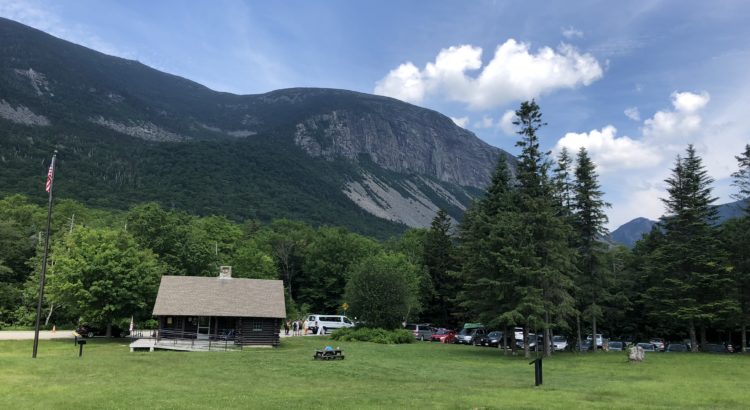By: Eilís Donohue, Interpretive Ranger at Franconia Notch State Park
A few weeks ago, I drove up I-93 to Franconia Notch State Park (FNSP), and pulled into my new home and workplace: the Lafayette Place Campground. I am one of two Interpretive Rangers stationed here at FNSP for the 2019 season. For the rest of the summer and into the beginning of autumn, I’ll be here providing interpretive nature programs and hiking information to the campers and hikers that flock to the Notch this time of year.
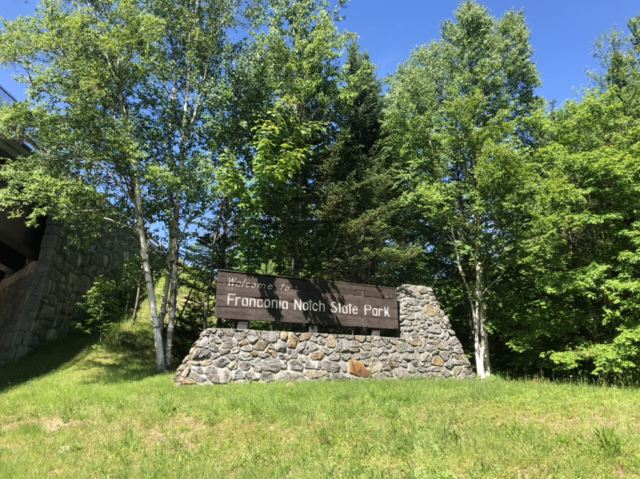
I’ve been learning a lot about this park and its campground over the past weeks, and I’d like to share with you, the visitors, what I’ve discovered as a full-time resident. I’ll give you the rundown on what to expect at Lafayette Place, which trails you can check out starting right in the campground, and how to be an eco-friendly camper so that visitors can enjoy this park and its campground for years to come. (Keep an eye out for a few of my personal tips for enjoying the area, sprinkled throughout the post!)
Where is the Lafayette Place Campground?
The campground is located right in the center of the park. FNSP straddles Interstate 93 for about 8 miles, and its main attractions are labeled with exits 34A, B, and C. Lafayette Place is located between exits 34A and B.
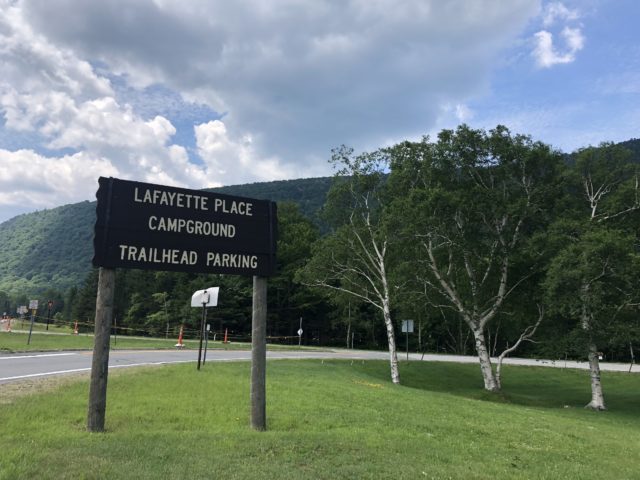
You’ll probably want to reserve a campsite ahead of time: it fills up fast, especially during the peak of summer! A handful of sites are available for walk-ins, but judging by the number of happy campers I’ve seen lately… you’ll want to make that reservation, either online or by phone. There is also an RV campground at Cannon Mountain, by the north shore of Echo Lake.
Enjoy the gorgeous views of the White Mountains as you drive along I-93. Heading towards Lafayette Place, you’ll pass right through the Notch and get a glimpse of a lot of the sights you may visit during your trip, including Echo Lake and Profile Lake.
You’ll also be able to see a lot of beautiful wildflowers growing on the roadsides and grassy medians. Right now, a few to look for are: Oxeye Daisy; Black-eyed Susan; Orange Hawkweed (also known as Devil’s Paintbrush or Fox-and-Cubs); and Lupine.
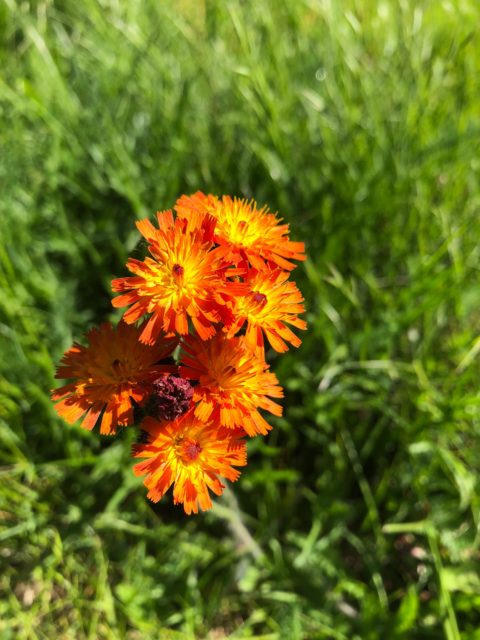
Orange Hawkweed, AKA Devil’s Paintbrush, AKA Fox-and-cubs! 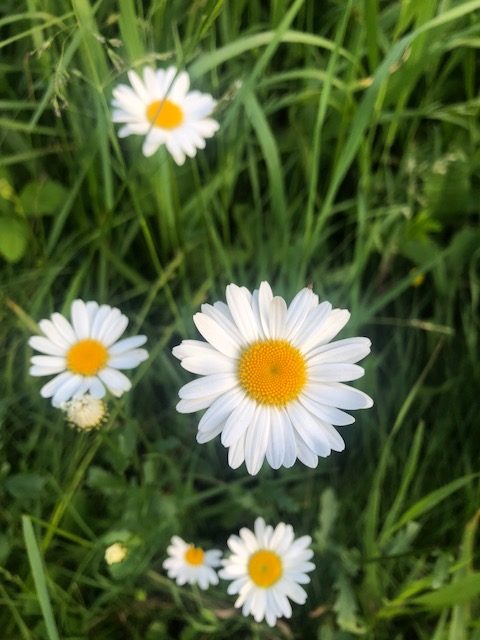
Oxeye Daisy
What’s there to do at Lafayette?
Besides roasting marshmallows and enjoying the great outdoors with your family or friends, there’s plenty to do in Franconia Notch State Park, starting right here at Lafayette Place:
- Come on in to the Hiker Cabin to say hello to your friendly neighborhood Interpretive Ranger, and get information about different hike and sightseeing. Stay to take a look at the displays in our Interpretive Center. Interpretive Rangers like myself, from years past, have assembled these exhibits to teach visitors about the ecology and geology of the park.
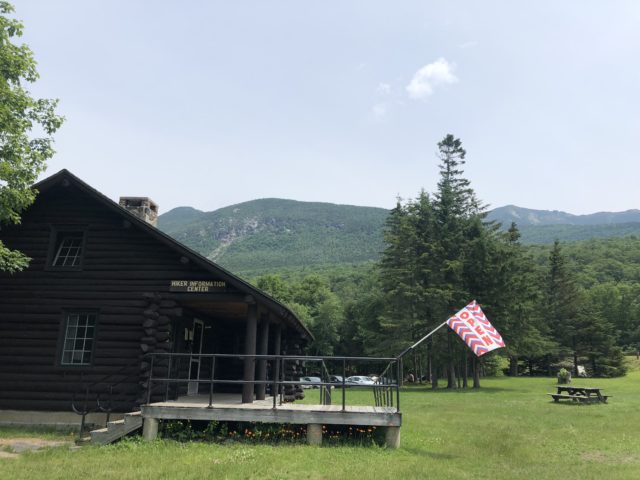
- For the young ones in your group (or the young at heart), there is a brand-new playground right in the campground, in the grassy area between sites 1 and 15.
- Stop by the campground store (Lafayette Lodge) for refreshments, firewood, other supplies, and maybe an ice cream after a long hot day spent exploring the park.
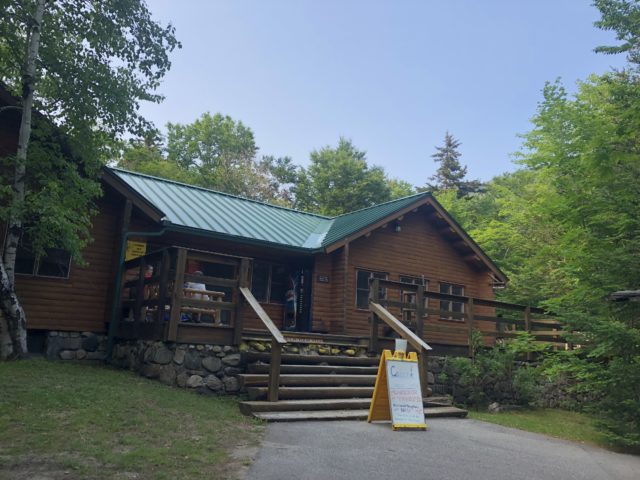
- Have a picnic! There is a picnic area near the Lonesome Lake trailhead, along the Pemigewasset River.
- One of my favorite things to do as I walk through the campground or along the Pemi or Rec paths is to look for wildflowers. I encourage you to stop and take a look too! I also offer an interpretive program, Wildflower Watch, that showcases the flowers of the season. By the time you’re reading this blog, some of the most likely flowers you’ll see on these paths are: Bunchberry; Bluets; Common Wood Sorrel; Indian Cucumber Root; and Mountain Ash.

Mountain Ash 
Common Wood Sorrel 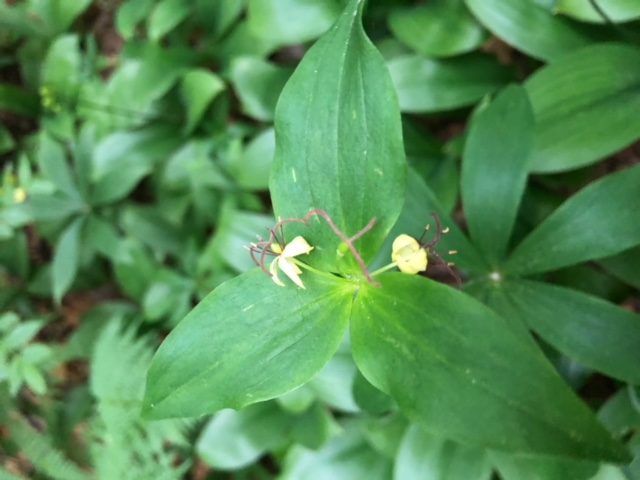
Indian Cucumber Root 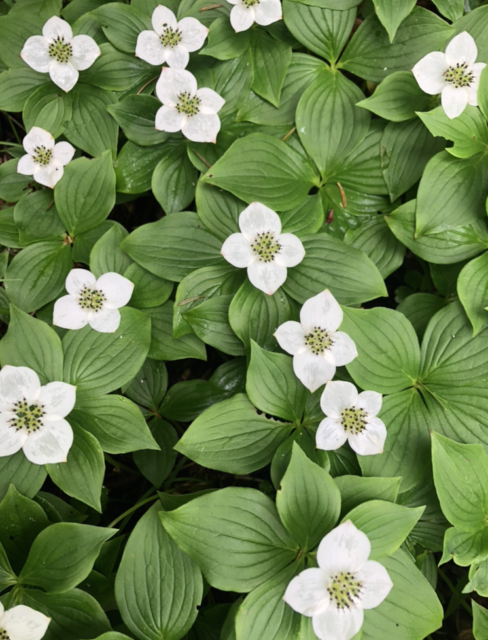
Bunchberry 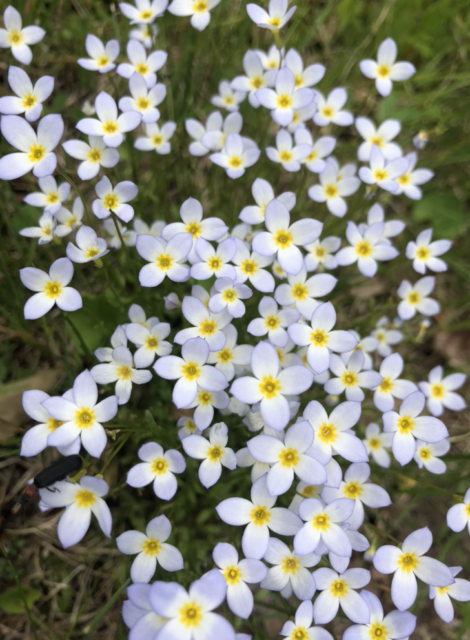
Bluets
- Wade in the cool waters of the Pemigewasset River, which runs right through the campground—about 11 sites have direct access.
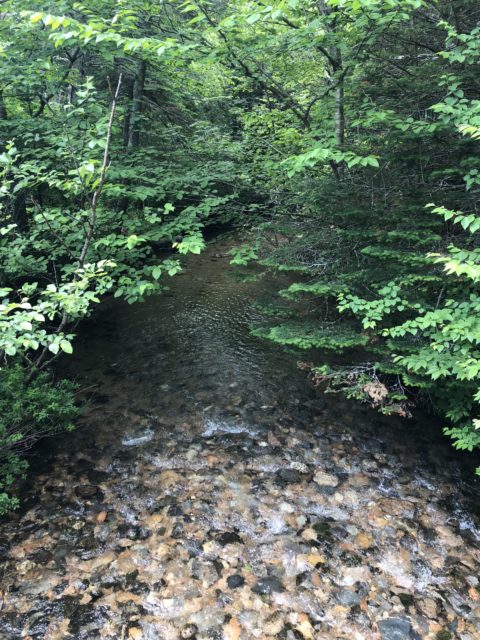
- Looking for something to do after dinner? Want to discover more about the natural features of the park? Myself and Sarah, the two Interpretive Rangers here this season, have prepared a diverse and full schedule of interpretive programming just for you. Check the calendar—posted online (right here) and around the park, including in the Campground Store and in the campground bathrooms—to read what’s happening on any given day. We’d love to see you!

But maybe you came to stretch your legs and do some hiking. Here’s a quick guide to the popular trails accessible from Lafayette Place:
- Pemi Trail: A relatively flat, unpaved, trail through the woods, and one of my personal favorites for a relaxing late-afternoon walk. It runs through the Lafayette campground and stretches about 4 miles in either direction—running the entire length of the park. Head north to access Profile Lake, the Old Man Memorial, and Echo Lake; head south to see the Basin. Either way takes you on a lovely, wooded jaunt along the Pemigewasset River. Not a loop—you’ll have to turn around and come back.
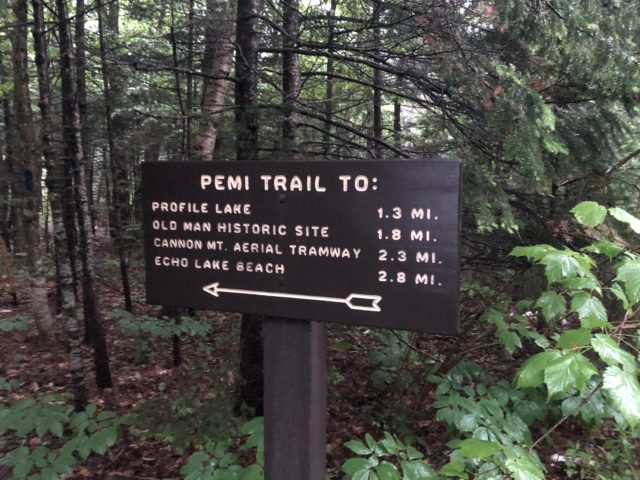
Use this section of the Pemi Trail to head north. 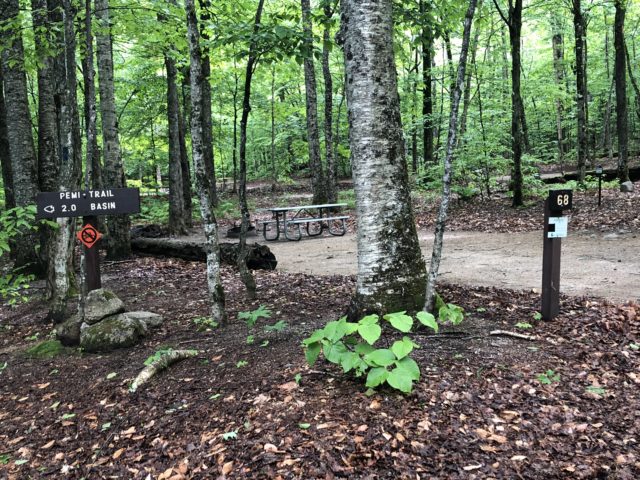
Head through the campground to site 68 to catch the Pemi going south.
- Franconia Notch Recreation Path: A wide, paved, meandering trail that runs 8.8 miles, through the entire length of the park. Pedestrians looking for a casual stroll through the woods, or a jog on a paved surface, are also welcome on this path. Not a loop trail. Wildlife tip: If you walk down at dusk to the bridge where the path crosses over the Pemi River, you may see a bat or two, swooping over the water and through the trees to catch insects.
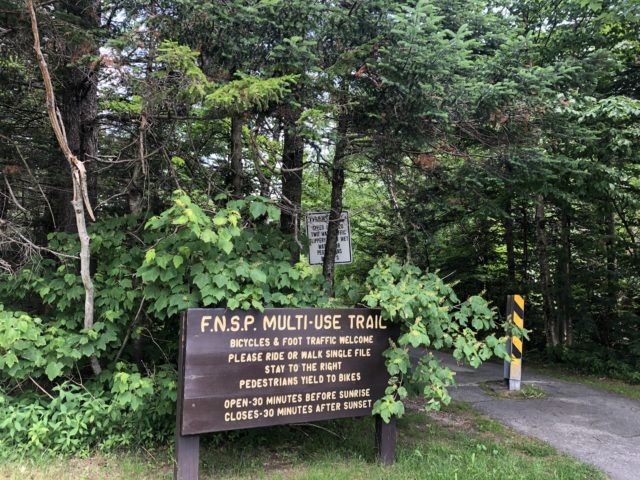
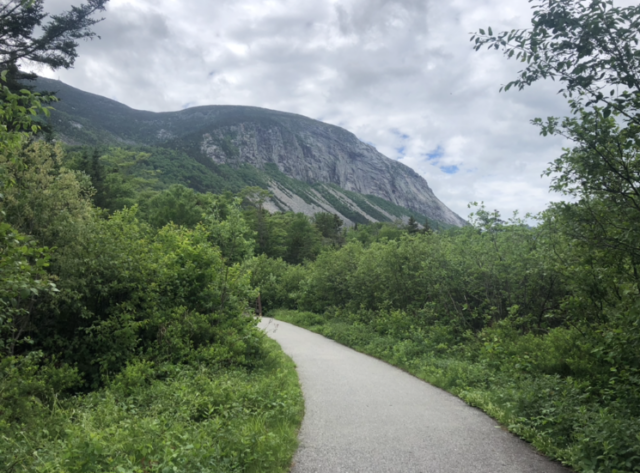
Walkers and bikers are welcome on the multi-use path.
- Old Bridle/Falling Waters: These are the two trails that lead up to the Franconia Ridge (Mount Lafayette, Lincoln, and Little Haystack). This is a difficult, 8.9 mile (14.3 km) loop trail that takes all day, but has rewarding views from the knife-edge ridge. The trailhead is accessed from Lafayette Place by using an underpass to get to the other side of I-93. There are three sets of waterfalls along Falling Waters trail, which leads up to Little Haystack Mountain (4840 ft). The Old Bridle Path is longer than Falling Waters, but not quite as steep, and leads up to Mount Lafayette (5260 ft). The AMC Greenleaf Hut is located on the Old Bridle Path, 2.9 miles from the trailhead at Lafayette Place—stop there to rest, refill water, and maybe purchase some snacks. Be sure to stop by the Hiker Information Cabin (open 7:30 a.m.-3:30 p.m. every day) before beginning this trail, to be sure you have all the information and gear you need!

Heading for the Franconia Ridge Loop? Go under the underpass and up the paved path until you reach this sign. 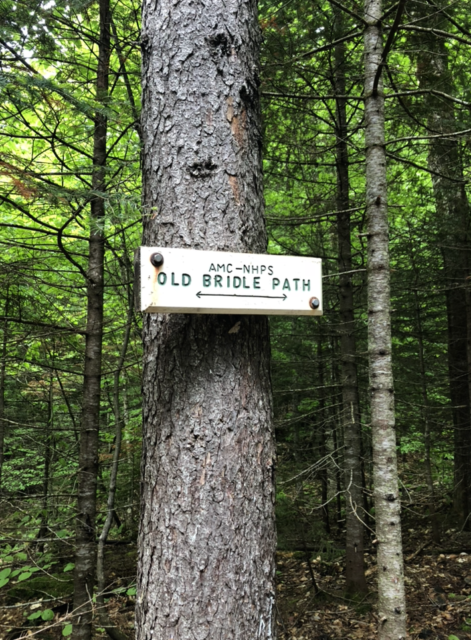
Go left to take the Old Bridle Path up to Mount Lafayette. 
Turn right and go across the bridge to take Falling Waters up to Little Haystack.
- Lonesome Lake: A moderate hike that you can turn into a loop, or turn around and head back to the campground the same way. The trailhead is on the west side of the campground. From the Lonesome Lake parking lot, you’ll take a right and walk through the campground for a few minutes, passing several campsites. Don’t be confused, this is correct! Soon you’ll reach the official trailhead, with a sign reading “Lonesome Lake Trail” and giving the distances to the AMC hut, the lake, and the summit of Cannon Mountain, also accessible via this path. After hiking between 75-90 minutes (on average), you’ll reach the lake, where you can cool off with a swim, and the Lonesome Lake AMC hut, where you can refresh yourself for the next leg of your journey.
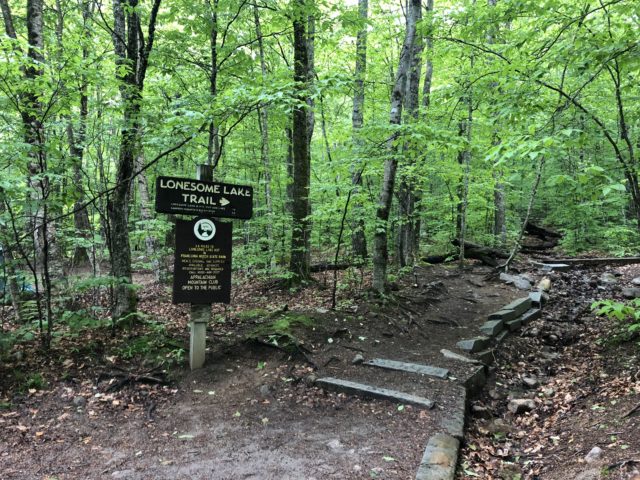
For information on the numerous other hikes in the park, with trailheads at different locations, feel free to swing by the Hiker Information Cabin before you start your day.
Keeping it Green: Eco-friendly Camping
Franconia Notch is a stunning region of the state—and we can all do our part to keep it that way. Franconia Notch State Park is a carry-in, carry-out park. What does that mean? We highly encourage visitors, especially hikers dropping by for the day or bikers passing through, and even campers here for a few nights, to pack out everything they brought with them when they leave. Yes, this means putting your granola bar wrapper in your pocket or pack until you get home.
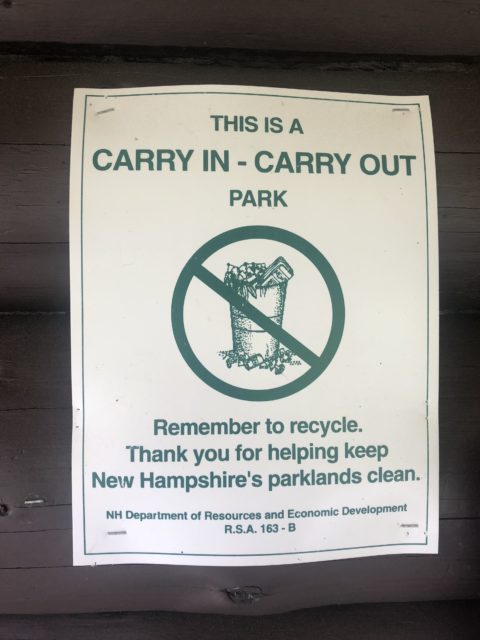
Why? First off, it’s sure better for the environment—and for your sight-seeing—to keep our parklands litter-free. Nobody wants to be walking through the woods and see other people’s garbage lining the path.
Secondly, the more trash that visitors deposit in the park, the more that parks have to handle. Trash and recycling have to be shipped off site for disposal, and it can be expensive to ship literal tons of heavy trash to appropriate facilities. By packing out your trash, you help lighten the load for the park, meaning its resources can be used for other amenities to make your visit more enjoyable.
If you love camping—which, if you’re still reading, I’m guessing you do—chances are you love and appreciate nature, too. In order to both enjoy and protect the beautiful parklands of New Hampshire, there are some steps you can take to minimize your impact on the Earth when camping:
- Invest in reusable tools and camping items: mess kits, cookware, rechargeable batteries for headlamps, reusable water bottles… Especially if you’re a frequent camper, this will save you money, and keep more plastic out of the landfill.
- Plan food carefully! Try to avoid single-use plastic by planning to cook meals from scratch, make your own trail mix at home and pack it in reusable containers, and so on. It takes a bit more planning, but can be healthier for the environment and for you in the long run.
- Use dishwashing stations (frontcountry) or strain out food scraps and wash with biodegradable liquid in the backcountry.
- Consider renting gear, buying used, or repairing broken gear before buying new ones: can be more cost effective and definitely easier on the environment than producing new materials.
- Follow the Leave No Trace principles for backcountry camping: know before you go how to be prepared to camp in the wilderness and leave behind as little evidence of your stay as possible. For more information, check out https://lnt.org.
- Recycle! In this campground, we recycle glass, plastic, and cans, and ask that you separate them—it is NOT single-stream. There is also a separate container for recycling used propane tanks. It’s important to recycle correctly, by separating different materials and not including trash or contaminated items in with your recyclables, so that what you think you’re recycling doesn’t get tossed in the landfill. We are currently going through a recycling crisis as a nation, so it’s more important than ever to learn how to do it correctly. Here are a few resources:
- Here‘s an article explaining the national recycling crisis, and another New Hampshire-specific one.
- https://earth911.com: this website has links to how and where to recycle near you, and a huge range of information about any item you might think of recycling: different colored glass, different numbers of plastic, even household items and appliances.
- Seek out your local recycling facility! They’ll have more specifics on whether your town has single-stream or separated recycling, and so on.
- Pack out trash and recycling if your campsite doesn’t offer those services, and do it correctly at home.
- Finally, be sure to enjoy your stay, but remember to be respectful of other visitors as well. Quiet hours in Lafayette Place start at 10 pm.
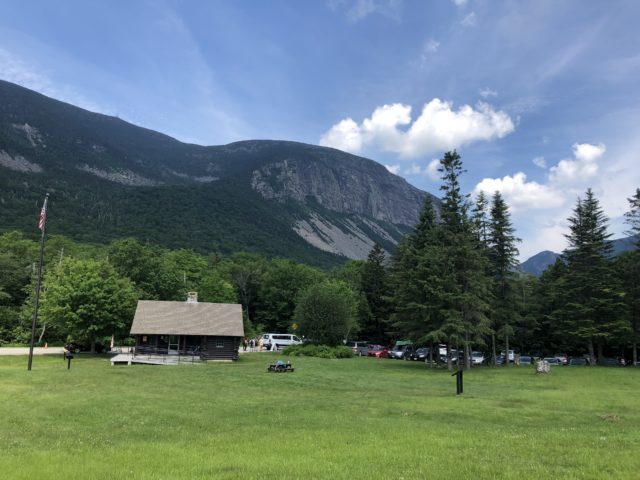
That concludes my camping tips and virtual tour of the campground. Hope you decide to make Franconia Notch, and Lafayette Place, part of your summer plans!

